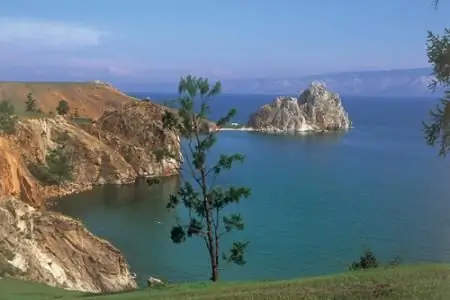- Author Harold Hamphrey [email protected].
- Public 2023-12-17 10:06.
- Last modified 2025-01-24 11:10.

The Sturgeon River begins near the village of Melekhovka on the Central Russian Upland in the Tula Region. It flows into the Oka near Kolomna in the Moscow region. The tributaries of the Osetra, giving a significant increase in water: Verkusha, Venevka and Mordves. The remaining tributaries are very small. Two reservoirs were built on the river: Livadiyskoye and Zaraiskoe, as well as the Silver Prudy dam. The Sturgeon River is 50-80 meters wide. But near Zaraysk, its width reaches 1.2 kilometers. Sturgeon is a shallow river. Its average depth is 1.5 meters. In many places the river can be easily forded (the water does not even reach the ankle). But at the same time, it is rich in pools 3-5 meters deep. Among all the rivers near Moscow, only Osetra has rifts and rifts. The length of the river is 228 kilometers. From November to April it is covered with ice. The Sturgeon River is not navigable. Shrubs mainly grow on the banks, there are small oak forests, but there are no coniferous forests.
Ichthyofauna
The Sturgeon River is famous for its richness and diversity of fauna. Only the Oka can compete with this river in terms of the diversity of fish species. The sturgeon boasts the presence of carp and bream, roach, crucian carp and perch, pike, pike perch and chub, asp, tench, ruff and gudgeon. Before the dam was builtSilver Ponds, sterlet and sturgeon lived in the river, because it was not for nothing that the river was called Sturgeon.
Natural and historical monuments
The banks of the Sturgeon amaze with the beauty and diversity of the relief: outcrops of limestone rocks, high river banks, reserved tracts, forests, wheat fields, springs. There are many natural and historical monuments here. The most significant of them are the city of Zaraysk and Byakovsky quarries. The latter are the longest underground system in the Moscow region. At almost every step there are small monuments of local importance. Rich in ancient settlements, Paleolithic sites, mounds, ancient villages with churches of the eighteenth century, holy springs, rocks and simply picturesque places, the Osetr River. Her photo shows the beauty of these places.

Holy spring
At a distance of 200 meters from the confluence of the Osetra into the Oka, there is a Holy Spring named after Nicholas the Wonderworker with a bow cross. Here, those who wish can draw holy water from the spring or take a dip in the bath. Near the source, a chapel of St. Nicholas the Wonderworker was built. This place is famous for the fact that it was here that Prince Theodore met the Korsun icon of Nicholas the Wonderworker, which gave rise to the construction of the city of Zaraysk. This icon was kept for a long time in the St. Nicholas Church of this town. Now it has been transferred to the Andrey Rublev Museum in Moscow.
Pike town
On a twenty-meter cliff near the Osetr River there is an archaeological monument - the tract Kamennaya Gora, or Pike Town, which isancient Russian fortification. The main attraction of this place is the Falcon Grotto Cave.
Tract Zapovednaya Oakbrava
The Zapovednaya Dubrava tract, located on the steep bank of the Sturgeon near the village of Klyuchevoe, is characterized by the presence of rare plant species.

Twelve Keys
The Sturgeon River is also known for the fact that there is a spring of Twelve Springs, which is famous as a holy place. The spring water has healing properties. It was consecrated and improved. Fourteen burial mounds were found not far from the source. It is believed that the soldiers of Dmitry Donskoy are buried here. Also, near the source, the remains of the Graboron Gates (defensive fortifications of the 16th-17th centuries) begin, 4 kilometers long.
Bar Park
It is impossible to list all the sights that the Sturgeon River flows past. The Lukhovitsky district, through which the river flows, is known for the old manor park in the village of Vlasyevo, where long-lived oaks grow.






